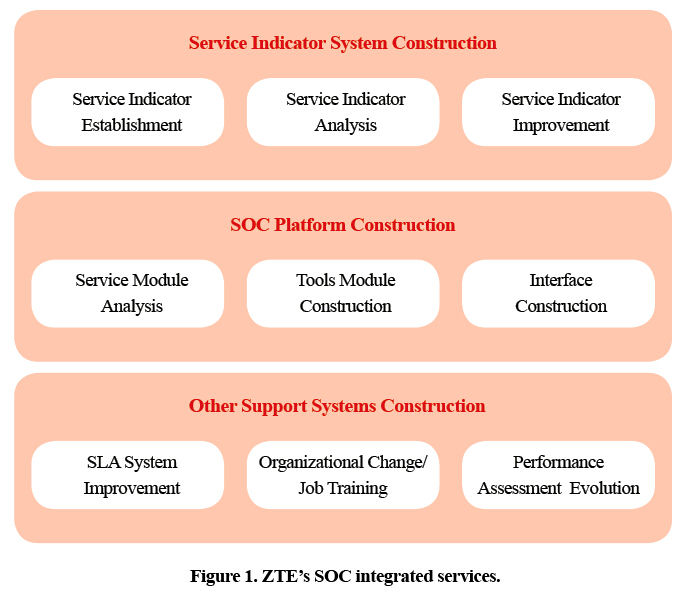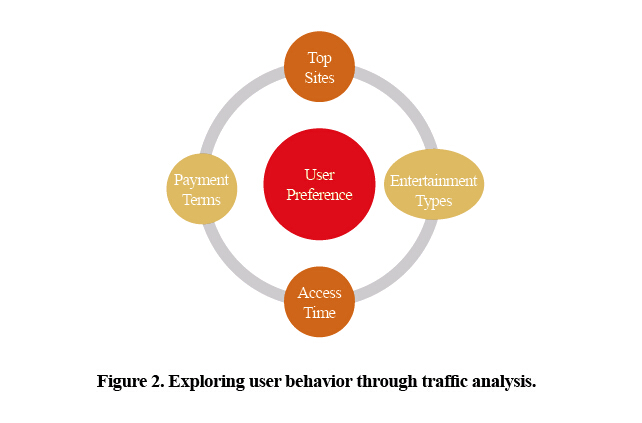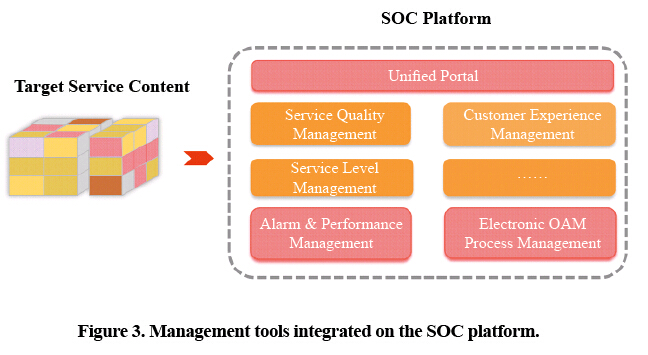SOC: Reforming Network OAM
In the mobile internet era, network operators own the means of transmission; however, the profitability of their transmission pipelines is being squeezed by OTT companies and smart terminal manufacturers. Operators have to invest in their networks to handle more and more traffic, but the revenue from this traffic is declining. Operators must therefore break away from traditional OAM models in order to develop.
At Mobile World Congress earlier this year, ZTE proposed a next-generation operation concept with customer experience as its center. ZTE first implements a service operation center (SOC) to create supporting systems. The SOC encompasses service indicator systems, SOC platform support, SLA management, and organizational restructuring. These create the foundation for the transition from traditional to service OAM models.
Data to Measure Customer Sentiment in the Virtual World
The telecom market is currently in a bind. Why are customer complaints increasing even though network KPIs are being met? The root cause is that traditional KPIs, which are largely based on network performance, are not comprehensive enough to gauge the overall QoS experienced by the end user. If an operator wants to be more than a pipe carrier for OTT companies and terminal manufacturers, they need to get closer to the user. Only by measuring QoS from the perspective of customer experience can an operator really exploit the value-adding potential of OAM.
ZTE draws on many years of experience with customer experience assurance to propose its SOC solution. SOC is an end-to-end performance assessment system based on customer experience. It converts customer experience into measurable, quantifiable indicators at the application, service, and user layers (Fig. 1).

With this assessment system, an operator can grasp various QoS trends in real time and make proactive changes for VIPs, very angry persons (VAPs), or even potentially dissatisfied customers. SOC also gives the operator a good overview of each subscriber’s network behavior (Fig. 2).

Three Steps to Building an SOC Platform
An OAM system that takes into account all fields relies on perfect collaboration between tools. There are three steps to building the SOC platform:
1. Consult expert teams to diagnose the current OAM status. SOC includes standard definitions of critical actions, input and output. It also includes a groundbreaking consultancy assessment process. With these things, SOC can be used to precisely locate problems in the existing OAM system.
2. Use a centralized OAM process to customize target services. ZTE will expand its SOC-based OAM services from alarm management, performance management, and process management to QoS management, VIP/VAP quality management, and VIP/VAP care. In line with process design rules, which defined by scientific aspects such as priority, automation and improvement, ZTE integrates and optimizes current network processes so that an operator can provide the most appropriate services.
3. Map from services to tools. As well as service content design, powerful support tools are necessary. According to the target service modules and scenarios, ZTE provides an operator with tools that match OAM requirement. These tools are used for alarm management, performance management, service quality management, and customer experience management. Analyzing service processes and data direction is necessary for the design and transition from service modules to tool modules. Establishing an OAM environment based on service scenarios minimizes the risks of function modules lying idle and improves the efficiency of tools as well as the input-output ratio of an operator.
ZTE has already developed and integrated OAM tools in all areas of its business. ZTE has much experience selecting tools, interconnecting networks, and integrating and testing different architectures. The management tools of the SOC platform have been widely applied and support the implementation of target services (Fig. 3).

SOC Creates a New OAM Experience
What new OAM experience does ZTE’s SOC provide? With an end-to-end KPI assessment system, an operator can be guided by changes in customer experience and QoS, not only technical indicators, when making network changes. New relationships between service quality and network resources are established in order to intelligently locate and analyze network faults.
ZTE’s SOC also incorporates industry-leading SLA management, integrating customer experience with SLA for intelligent dispatching according to fault priority. The SOC sets service indicator thresholds for alarm, performance, and customer experience systems in order to make network OAM more transparent.
SOC-based service OAM makes customer experience, QoS, and service-level management more transparent, controllable, and open for analysis. SOC also helps an operator identify potential areas of value. Most of all, SOC helps an operator explore new profit growth strategies and provide strong support for OAM and corporate operations.